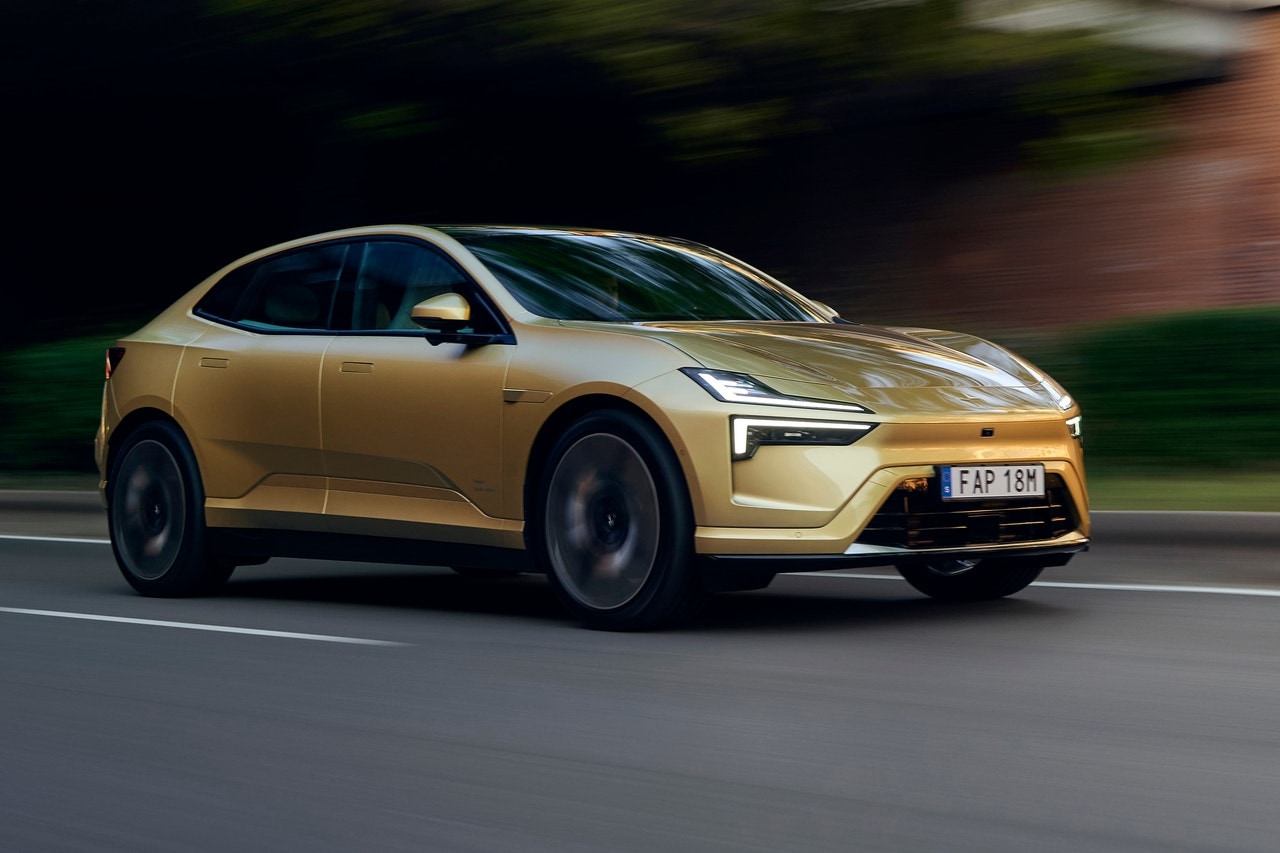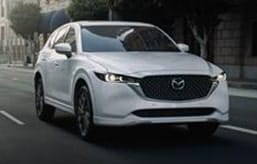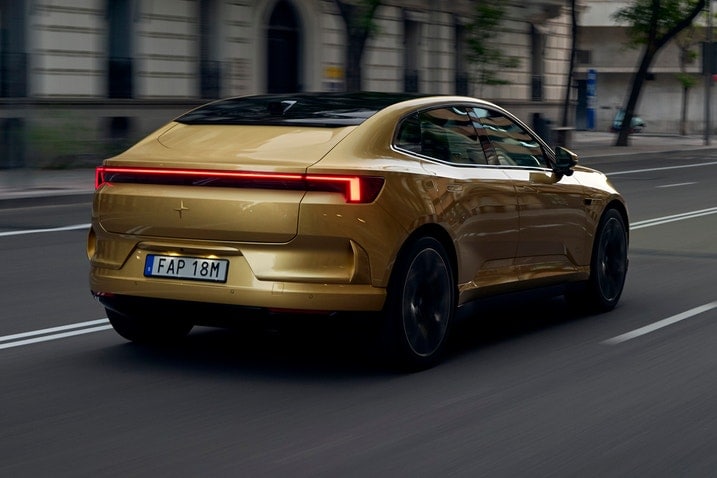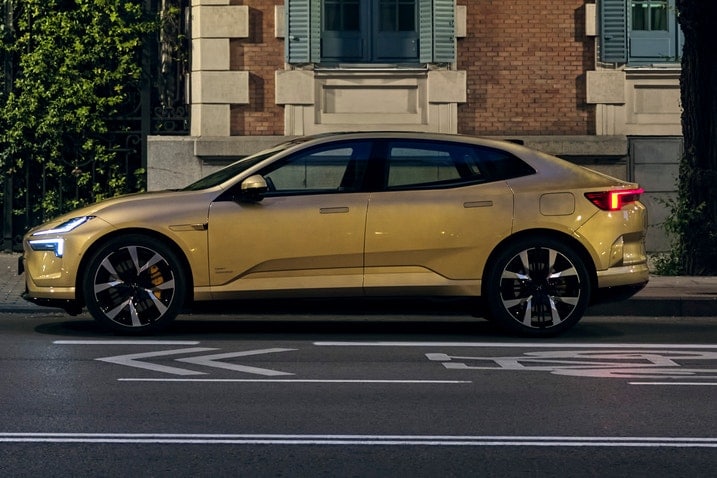- The Polestar 4 is the Swedish EV brand's, well, fourth car.
- It's either a low-slung crossover or a lifted sedan depending on how you look at it.
- Prices start at $56,300 and it goes on sale in a few months, but we don't think it's fully finished yet.
2025 Polestar 4 First Drive: This EV Needs More Polish
This isn't the Polestar you're looking 4
On paper, the 2025 Polestar 4 looks like it should be a follow-up act to the truly excellent Polestar 3. Despite having a bigger number, the 4 is both cheaper and smaller than the 3. It also has all the proportions of a lifted sedan with its frameless doors, rear liftgate instead of a proper hatch, and no rear window whatsoever, yet Polestar insists it's a crossover SUV. If that's confusing, you're not alone. In fact, it seems like the Polestar 4 doesn't really know what it wants to be, and that identity crisis goes beyond just the bodywork.
Conventional styling with unconventional choices
The way it looks might not be polarizing (in person, the 4 is quite handsome thanks to some tidy styling), but some of the decisions might give prospective buyers pause before they even get inside. The first is the aforementioned exclusion of a rear window — the entire rear hatch is just metal bodywork. It gives the 4 a clean appearance from all rear angles, but looking over your shoulder to see, well, nothing might take some serious getting used to. It also means drivers will be 100% reliant on a camera to see what's behind them.
Simply put, I don't think everyone's that trusting. And while the camera itself has some neat tricks — like nudging what's displayed on the mirror-screen over to the left or right depending on which way you signal — I found myself wanting a traditional mirror after a little while. Additionally, since I only drove the 4 during the day I can't really report on what it's like to use at night. It was perfectly fine in the few tunnels I drove through, but they were all relatively well-lit and weren't representative of what a pitch-black summer's night along California's I-5 freeway would look like.
Missing that Polestar feel on the road
Once you're behind the wheel, the Polestar 4 is disconnected from you and parts of itself. The dual-motor all-wheel-drive car I drove kicks out 536 horsepower — and the result is the PS4 is plenty quick from point to point — but in the corners it lacks the accuracy we've come to expect of a Polestar. The brand clearly presents itself as the sporty alternative to Volvo, and the PS3 fulfills that mission to a tee. But the 4 lacks its bigger sibling's precision. Steering effort is always too light regardless of what mode you're in and a lack of feedback leaves you guessing at the wheel. Turn into a corner and the nose takes a noticeable beat to obey your commands, and then the rest of the chassis takes yet another to catch up. It's almost as though the rear end of the PS4 doesn't want to play ball with the front, and that leads to a resoundingly sloppy feel while you're at the helm.
The ride, while fine, also lacks the PS3's composure. Even in the car's softest mode it's obvious that the suspension is stiffly sprung — and the car's simply-too-big 22-inch wheels don't help matters. It jitters over expansion joints and never seems to settle down properly. The Spanish roads I drove the 4 over looked silky smooth (and proved to be when I drove the Polestar 3 on the same route), but the PS4 managed to find every rut and point them out to us as we rode along. The car I drove was very close to production-spec but felt as though it was just unfinished. A little more fine-tuning here and some dialing-in there and the 4 might come good, but we don't think it will handle America's rutted streets and highways with the same sort of aplomb we're quite sure the PS3 will.
The Polestar 4's interior is the highlight
That's a bit of a shame because, aesthetically at least, the Polestar 4 is a very nice place in which to spend time. The interior design is defined by Polestar's typical Scandinavian minimalism, and despite being less expensive than the Polestar 3, the materials feel like they're of the same high quality. The seats, as they are in most Volvo/Polestar products, are a particular highlight. They're covered in a soft vegan leather and are supportive without being too firm. They can also be heated, cooled, massaging, and have little speakers built into the headrests should you specify the Plus Pack.
The rear passenger area is nice, as well. There's plenty of both head- and legroom for rear-seat riders, and though it can seat three abreast in the back, it's really meant for two. The center section of the backrest folds down, and on either side of it are seat controls. They allow the two outboard rear riders to decide how much they want their back seats to recline. It's a nice touch, and it gives the back seat a lounge vibe that rear riders will appreciate. Behind the rear seats is 18.6 cubic feet of cargo room, which lends even more credence to the idea that this is more sedan than crossover (a Dodge Charger trails by just 2 cubic feet).
It's also the first Polestar to work a significant amount of lighting into its interior. The doors and dash light up with the glow of whatever planet you select in the infotainment screen. That's right, your Polestar 4's ambient lighting signature depends on which of the planets in our solar system you select — I went with Uranus' deep blue hues for most of my drive.
The infotainment screen, though the largest in a Polestar yet (a 15.4-inch landscape display screen) did prove to be a bit tricky to use at times. The icons on it are a touch small, and hitting them while you're on the move proves quite difficult. The "hit box" for the icons feels too small, and you have to be very precise with your inputs on the screen in order to get it to follow your commands. But since you're on the move and being jostled around by the car's stiff suspension, missing an icon is often too easy to do. This can probably be remedied with an over-the-air update, and I'll be able to pass further judgment on this when Edmunds gets one in for testing, but my first time using the 4's screen was less than intuitive.
Pay attention or else ...
But the lack of cohesion on the road I mentioned earlier and the tricky-to-use display fall into insignificance when it comes to the Polestar 4's biggest crime: the driver attention warning. This was easily the most frustrating part of driving the 4. Maybe it was the way it was tuned, the position I was seated in, or maybe it just hated my face. Either way, throughout our few hours with the car it would not stop firing.
If my eyes dithered from the road for even a moment — to, say, check my blind spot or look at the rear camera/mirror — it beeped and warned me to pay attention to the road. If I used a few precious moments to look at the infotainment display to change the temperature (something I almost always had to do because there is no physical knob to use that would allow me to change the temperature without taking my eyes off the road), it beeped and warned me to pay attention to the road. After a while it seemed like if so much as dared to blink it would chime in. It was an anxiety-inducing part of the drive, one I could not fathom how to remedy.
Just like with the responsiveness of the infotainment screen, this can probably be "fixed in post" as Edmunds' video department loves to say, but for now that was simply too irritating to not mention.
On the whole, Polestar 4 fails to exceed or even meet the high bar set by the Polestar 3, and it's a bummer. The Polestar 4 starts at $56,300 for the single-motor rear-wheel drive cars (that should be good for 300 miles of range, per Polestar), while the dual-motor all-wheel drive car I tested — with the Performance Pack — would cost nearly $80,000 and net 270 miles of Polestar-estimated range. For that kind of money, the 4 is difficult to recommend in its current state. Plenty more fine-tuning is needed in more than a few places, but we aren't far away from the car's U.S. launch.







 by
by  edited by
edited by